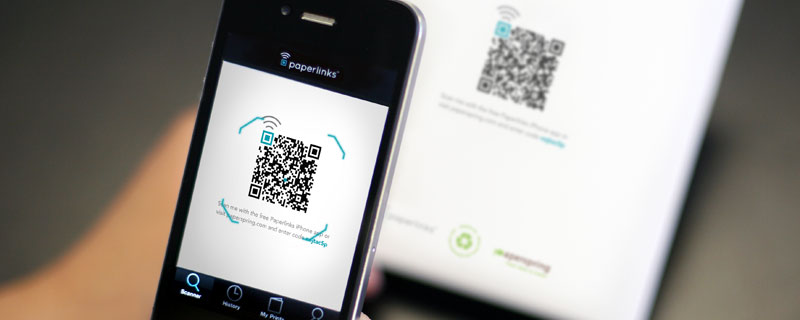BLOG
How to Enhance Lead Generation on Mobile
Generating leads on mobile devices isn’t quite the same as generating them on desktops and laptops. With a smaller screen and other important information that required attention, many marketers feel lost and confused about how to enhance their lead generation strategies on mobile devices.
It also doesn’t help that people don’t behave the same on the mobile phones as they do on their laptops. They have different patterns, and they’re not always browsing. Most mobile searches and activity is pointed. Users have a clear goal. It’s up to you to get your content into their hands.
Luckily, we’ve got you covered. Check out this essential guide to improving your lead generation strategy through mobile devices.
Note: If your website does not already have a responsive design, start here.
Use clickable phone numbers
The difference between searching on a mobile phone versus a laptop is action. When you’re on your phone, you are moving. You’re going somewhere; you’re making a plan. People searching on their phones are generally looking to take action while those searching on their laptops are looking to browse. This is a big difference and one that all digital marketers should realise as they plan for their mobile strategy.
One of the biggest benefits of searching for a business on a phone is that most smartphones will allow you to call the business, just by clicking on a button. Now customers can easily call you if they have a quick question or would like to schedule an appointment, and since most mobile searches are about action, you might not have to do too much for your lead, other than pick up the phone.
This function is especially useful for companies in property development. If users are browsing listings on your website and see one they like, then they’re just one click away from calling you. The fewer obstacles in their way, the better likely your lead will contact you first.
Cut out the fluff
Mobile users search with purpose, and when they do have a minute or two to browse, it’s usually while they’re in line at Starbuck’s or waiting for a train to arrive. That means you only have a few minutes to get your content right into your audience’s hands before they become distracted or have to put down their phones.
Since mobile users don’t really have a lot of time to consume your content and might not even make it through the whole article, you have to make your content as easy to digest as possible. Follow these three simple tips:
- Put your links to targeted content at the top of your content, rather than at the bottom. Again, not everyone will make it to the bottom of your article, so show them the most important content first. By at least showing these links, interested viewers might return to the page the next time they have a moment to browse.
- Keep your content tight and to the point. Your blog is not the place to emulate Charles Dickens. Make your headlines and subtitles bold so they’re easier to read and understand.
- Try out different types of content and see what works best with your mobile audience. Do they like list articles, or do they prefer to read how-tos. The articles that have low bounce rates and plenty of comments and shares are probably your best bets for mobile content.
Another essential part of you copy should be short, succinct call-to-actions. You need to be able to quickly point your audience in a certain direction and encourage them to act now. Rather than leading up to a call-to-action, make sure you put it at the beginning of an article. Even if readers don’t get to the end of the article, they’ll still know what the next step is.

Using QR code for online promotions. Photo : Paperlinks. Source: Cohlab
Promote customer loyalty with online promotions
Smartphones users are thoroughly connected to their phones. They can surf Facebook, post photos to Instagram, scroll through their emails and even check their bank account balances. Now marketers can use this connectedness to their advantages when choosing to do certain promotions.
Cross promotions with Facebook and other social media helps you generate leads in two ways. Let’s say your financial firm offers a free consultation to anyone who likes your Facebook page within the next 10 business days. Your first benefit is easy. You get people to like your page, and now you can keep sending them updates, content from your blog and any other new regarding the financial world. Even if they don’t come in for a consultation, you can still nurture your lead.
Of course, if the customers do come in, all they have to do is show you their phones, and you can continue with your consultation. Assuming things go well, you will have possibly gained a new client or at least nurtured a lead.
Make your profiling form mobile friendly
For anyone with thumbs bigger than a five-year-old’s, filling out sign-up forms on a mobile device is no easy task. The boxes are often too small, and you sometimes end up clicking on the wrong line.
Don’t forget, your users are usually limited on time, so if your sign-up form requires more time to fill out, users won’t often stick around to do it. They’ll just got search for content on other websites. Therefore, it is up to you to make these sign-up forms as simple and pain-free as possible.
Instead of making long forms, you should adopt what is known as progressive profiling. It involves replacing the form fields that were previously filled out for the next time the visitor comes to your site. You’ll still get the same information, but now you’ll get it over a period of time.
By the way, did we mention that progressive profiling actually optimises your mobile presence for higher conversion rates?
With Google’s latest algorithm update, which now favours responsive website design on mobile searches, it appears that having a mobile strategy will be equally important as any other marketing strategy. Optimise your lead generation strategy on mobile devices and see your mobile lead generation efforts grow into repeat customers.











